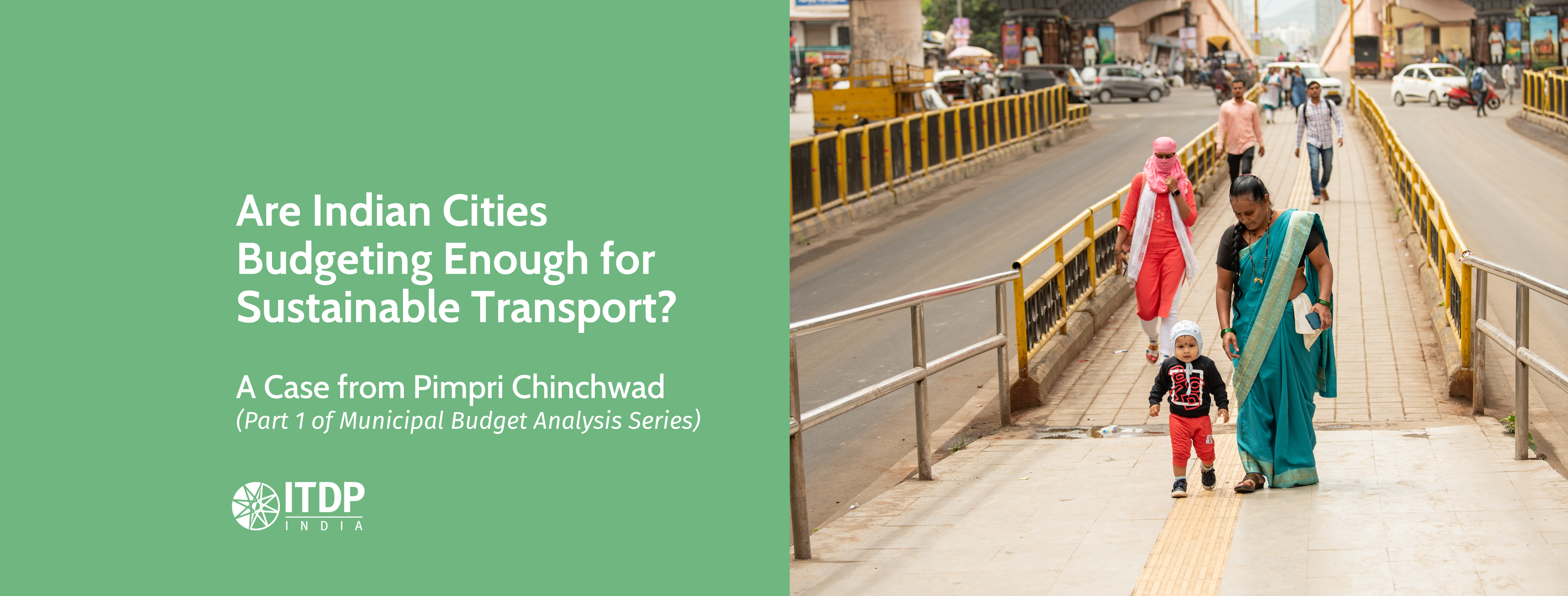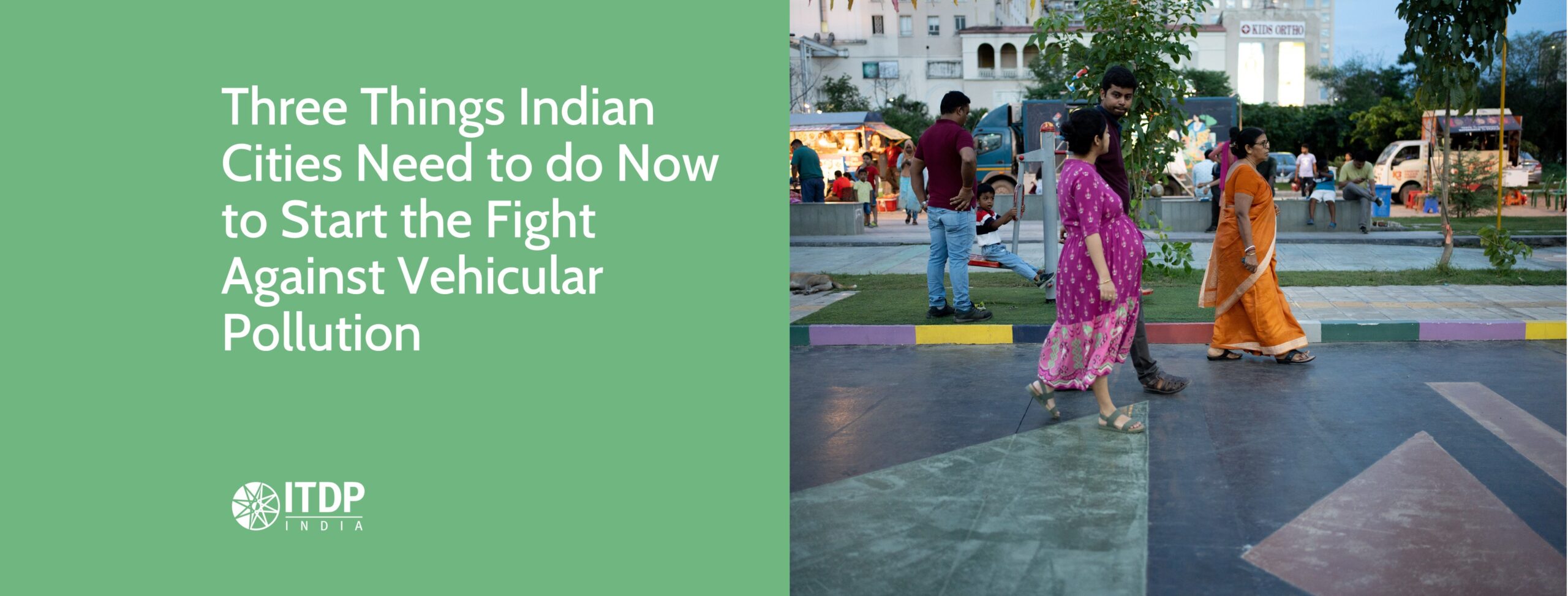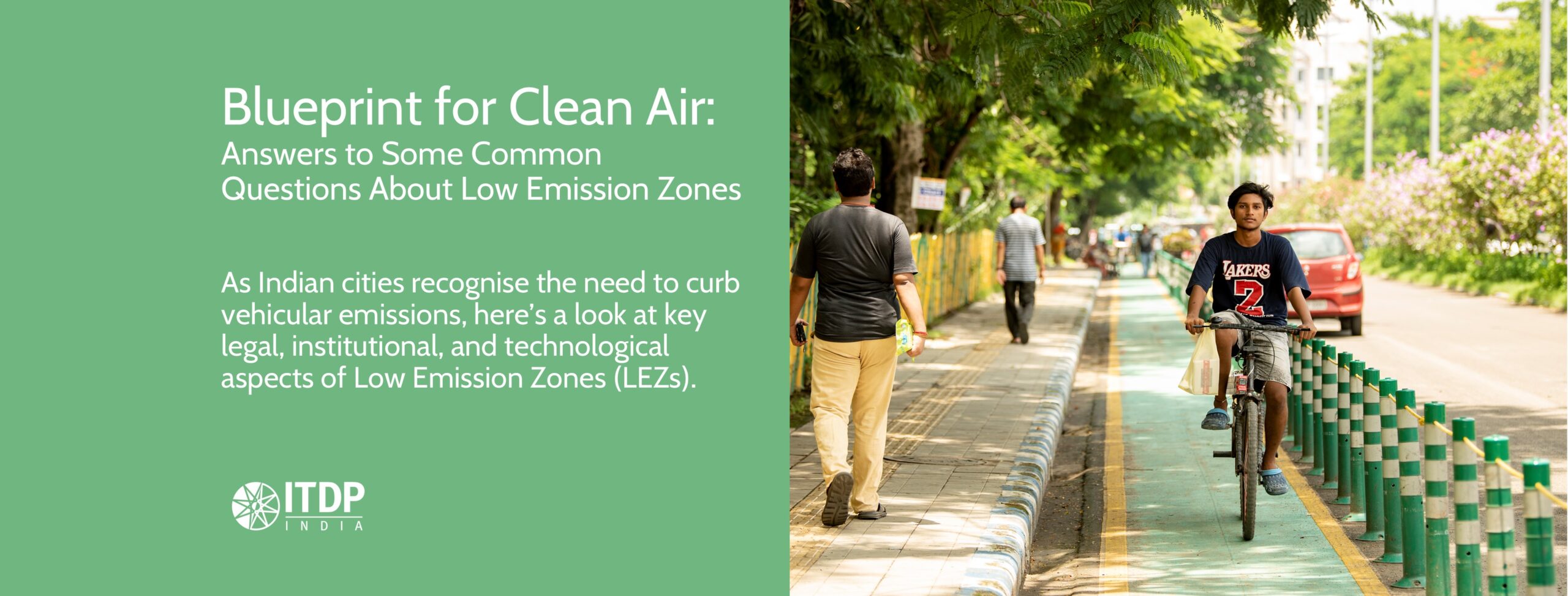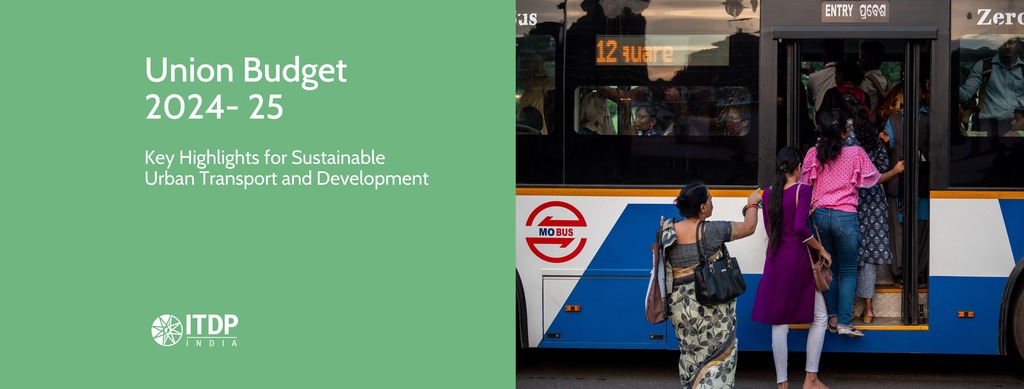(Part 1 of Municipal Budget Analysis Series)
Annual municipal budgets shape how the city’s resources- the taxpayers’ money- are allocated to shape the city and in turn serve its residents. However, the question arises: do the city’s annual budgets reflect investments in mobility for cleaner air and congestion-free streets, which have been challenging for most cities? Such budget allocations are even more critical for rapidly urbanising Indian cities.
Pimpri Chinchwad is one of India’s fastest-growing tier-2 cities. Through its ambitious policies, plans, and projects, Pimpri Chinchwad has been actively striving to build a robust sustainable urban mobility system in the city. Pimpri Chinchwad Municipal Corporation’s (PCMC) bold policies, including the Non-Motorised Transport Policy (2021) and Pune Metropolitan Region’s Comprehensive Mobility Plan (2018), aim for 90% of trips to be made by walking, cycling, or public transport by 2036. PCMC also aims to reduce private vehicle trips by 18%, focusing on a fair distribution of road space between all users and a shift towards sustainable urban transport modes such as walking, cycling, and public transport. However, as per Parivahan data, with nearly 90 vehicles per 100 residents, congestion, road safety, and air quality remain major challenges.
PCMC is well aware of this alarming figure and is making every effort to address it. With the further expansions of the existing 54 km of Bus Rapid Transit and the 7 km of Metro, along with 16 km of suburban rail, and more than 100+ km of redesigned healthy streets, the city is reshaping how people move.
While in the last decade, the city has made strides with its sustainable transport initiatives, how can we ensure it remains committed to creating safer streets, reducing congestion and improving air quality?
One key indicator of the city’s commitment to its sustainable transport goals is how much allocation of the municipal funds goes to various transport modes, especially the sustainable ones – walking, cycling, and public transport.
PCMC collaborated with ITDP India to analyse the city’s annual budget allocations from 2022-23 to 2024-25 (across a period of three years) focusing on mobility projects in the city. In June 2024, ITDP launched the ‘PCMC Municipal Budget Analysis Report’ capturing the insights from this research project.
Why was the study conducted?
The study was conducted to gain a nuanced understanding of historical budget allocation trends, assess current allocation patterns, and identify gaps and opportunities for future provisions towards urban mobility. It aimed to establish a detailed report of funding requirements through projections and provide informed recommendations to enhance the upcoming annual mobility budget allocations. Additionally, this study was undertaken in response to the lack of such detailed case studies in India, highlighting the need for more structured approaches to urban mobility budgeting and planning.
How did we do it?
The team meticulously examined the city’s annual budgets for the past three years, scrutinising each line item related to transport and categorising them into ‘sustainable and non-sustainable modes’ of transport. Sustainable modes include projects that encourage walk, cycle, and use of public transport. Non-sustainable modes include items which encourage use of private motor vehicles and prioritise private vehicle movement over other sustainable modes.
What were the key observations?
1. Transport allocations inching towards its sustainable transport goals
With a total municipal budget of ₹8,676 crore, PCMC has one of the highest per capita budgets allocated in the state. In 2024-25, 17% (₹1475.4 crore) of the annual budget was allocated to transport– an increase in proportion to the overall increase in municipal budget as compared to the previous year. Additionally, over half of the current transport budget is now allocated to sustainable transport infrastructure, up from 48% (₹540 crore) to 56% (₹818 crore) as compared to the previous year.

Graph showing an upward trend in PCMC’s annual transport allocations, along with the sustainable and non-sustainable allocation split
2. Significant increase in allocation towards walking-cycling infrastructure
The non-motorised transport (NMT) budget allocation of ₹439.7 crore accounts for more than half of the sustainable transport budget and one-third of the entire transport budget! As compared to the previous years, the city has more than doubled its allocation towards NMT from ₹217.9 crore in 2023-24 to ₹439.7 crore in 2024-25 which is a move in right direction. This shift is mainly due to the allocations for the ambitious ‘Harit Setu’ project that aims to make PCMC a 15-minute walking-cycling neighbourhood city and ‘Urban Streetscapes Programme’ (USP). In addition, this also includes allocations for initiatives like cycle sharing systems, parking management, and maintenance of infrastructure.

Sankey graph showing the detailed transport allocations for the year 2024-25
However, PCMC needs to allocate a similar amount consistently every year towards creation of footpaths and cycle tracks to achieve the goal of 90% of all trips by sustainable modes by 2036. This budget will support the transformation of 25 km of major streets and 100 km of minor streets each year. Only by maintaining this aggressive pace, can PCMC systematically transform its streets over time and move closer to achieving the NMT Policy’s targets.
3. Need for more investment in public transport
While there have been significant efforts to improve walking and cycling, there is a gap in funding for more public buses. There is still a need to make buses more accessible to everyone. The city funds its public bus system by providing Viability Gap Funding (VGF) to the city’s transport undertaking – Pune Mahanagar Parivahan Mahamandal Ltd (PMPML). However, the city’s budget allocation for buses has seen a slower increase, rising from ₹231 crore in 2022-23 to ₹359 crore in 2024-25 for buses over the four years. According to PMPML’s Vision 2027, the city currently has around 26 buses per lakh population, which is half of the national guideline of 60 buses per lakh population and an exponential increase is needed to meet these goals. In addition to the operational expenditures, PCMC needs to allocate an estimated ₹730 crore annually to achieve target bus fleet of 2850 size (as per the recommended MoHUA standards) by 2030.

Comparative chart showing the non-sustainable and public transport allocation trends
4. Car-centric investments still dominate the budget
As one of the fastest-growing cities, Pimpri Chinchwad has also prioritised the development of new streets to ensure connections to the new villages. As a result, the private motor-vehicle-centric road expenditure is reasonably high. It is critical for such cities to ensure this new development is equitable and caters to the needs of pedestrians, cyclists, and public transport. The allocation of budget for car-centric infrastructure, such as flyovers and multi-level car parks, is consistently high. At ₹657 crore, PCMC is allocating twice as much for non-sustainable transport than that for public transport. Surprisingly, some programs, like Sustainable Urban Transport Projects (SUTP) and Urban Transport Funds (UTF), earmarked for sustainable development have budgetary provisions for car-centric projects. A 100% of the ₹4.5 crore under SUTP and 51.6% of the ₹262.5 crore under UTF are allocated towards non-sustainable transport projects like carriageway and flyover development.
In a Nutshell
The substantial doubling of funding for walking and cycling projects highlights PCMC’s commitment to its NMT Policy goals. However, public transport remains underfunded with a visible shortfall of buses and a dire need for improved quality of service in the city. On the contrary, car-centric projects continue to receive disproportionately high funding. To achieve its goals, PCMC should not only increase funding for sustainable transport initiatives but also simultaneously reduce the allocations for high-value car-centric infrastructure. This can be achieved through reallocation of existing budgets towards sustainable transport projects.
The study also provides recommendations for a sustainable transport-focused budget, exploring innovative revenue sources like parking management, municipal bonds, national and international grants. It also emphasises the need to consistently allocate budgets for walking, cycling, and public transport projects to help PCMC maintain its status as a leader in sustainable transport in India.
Since presenting the findings at the Smart Cities Mission’s National Conference in January 2024, the team has also been focusing on helping cities with securing additional funding through this data-driven approach. In the next blog in the series, we’ll take a deep dive into the process of the budget analysis including methodology, limitations, and the challenges faced while conducting the study. Stay tuned!
Written by Donita Jose, Senior Associate Communications
Edited and technical inputs by Rutuja Nivate, Associate- Urban Development and Pranjal Kulkarni, Programme Manager – Healthy Streets and Compact Cities












